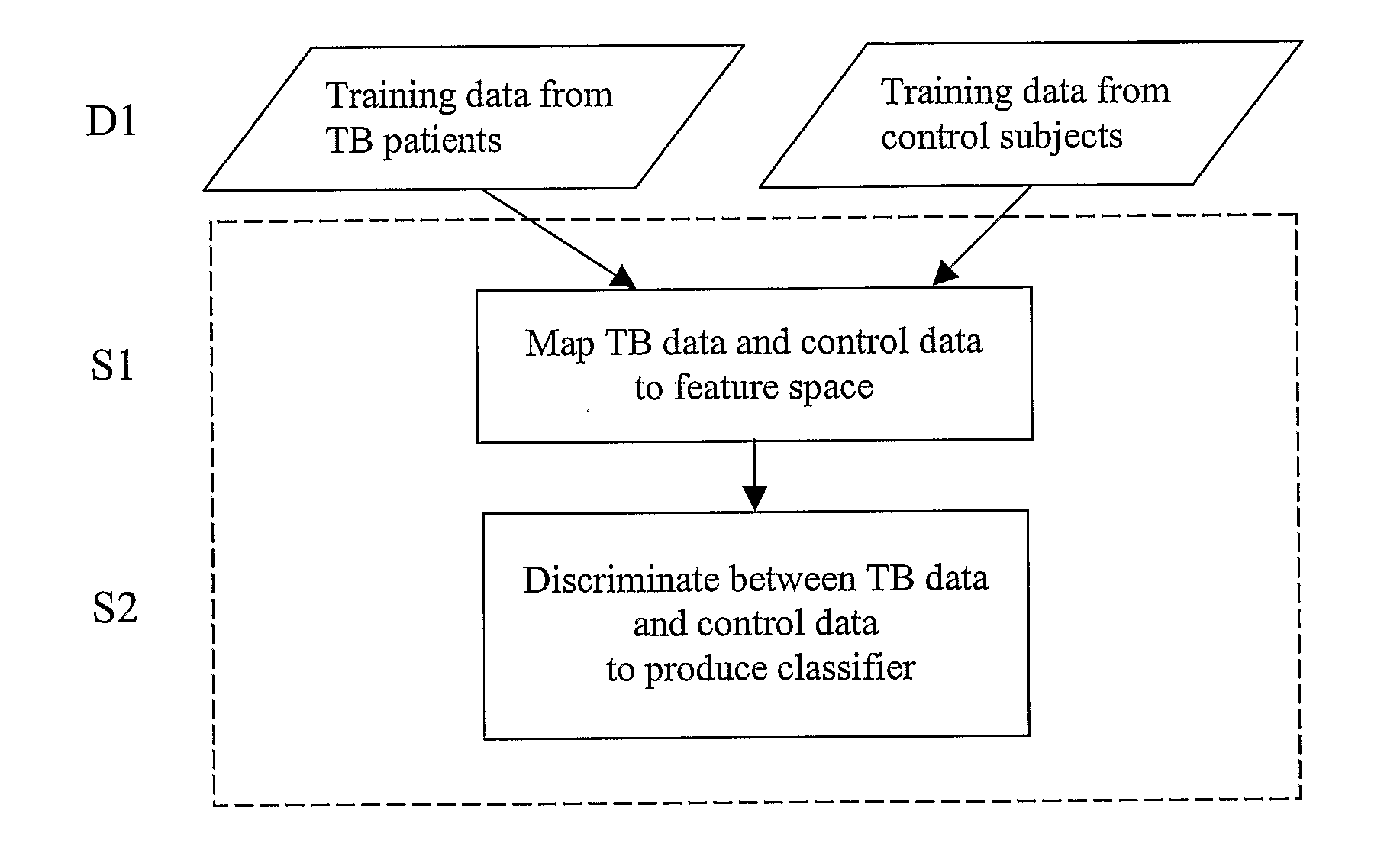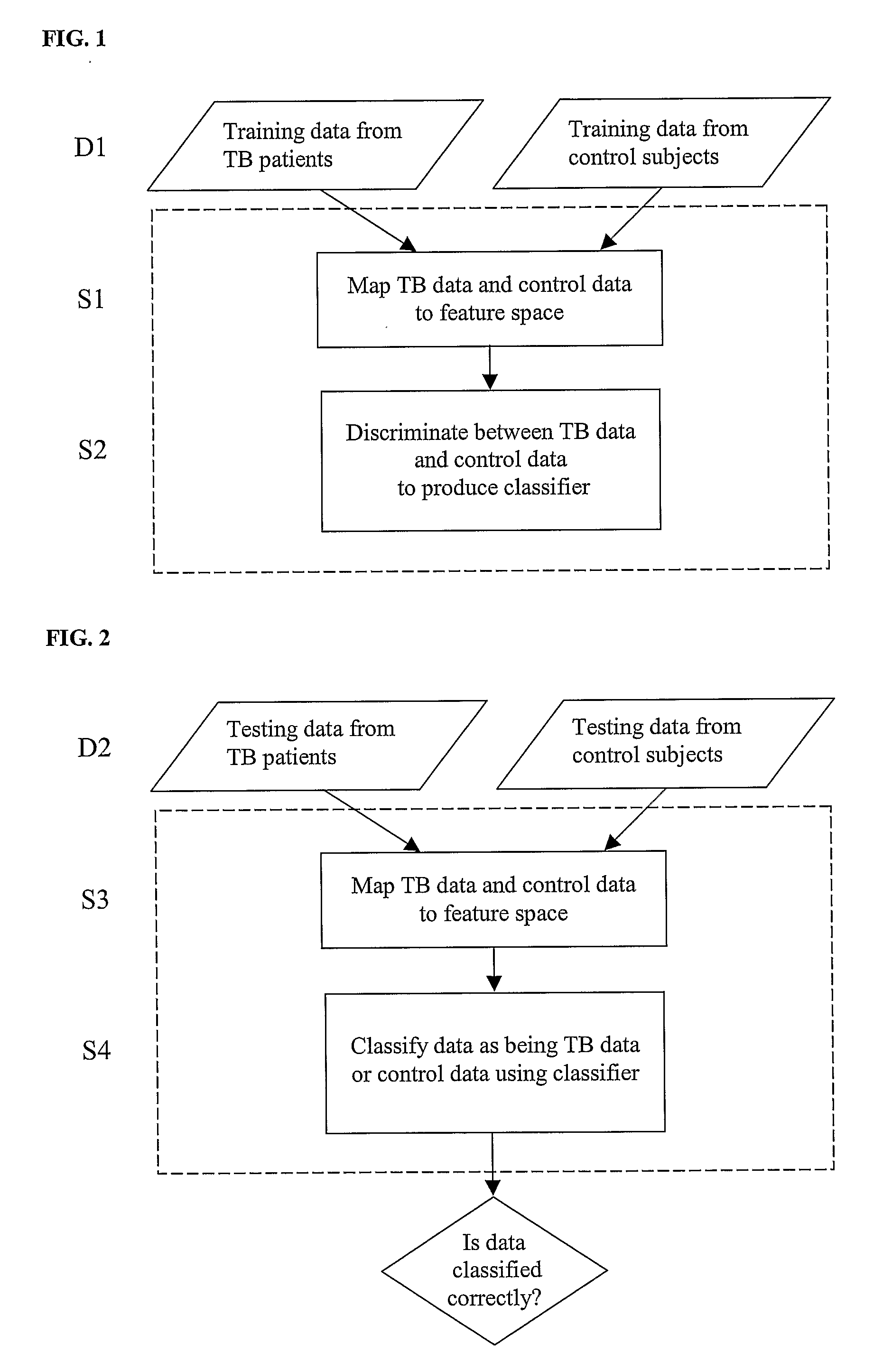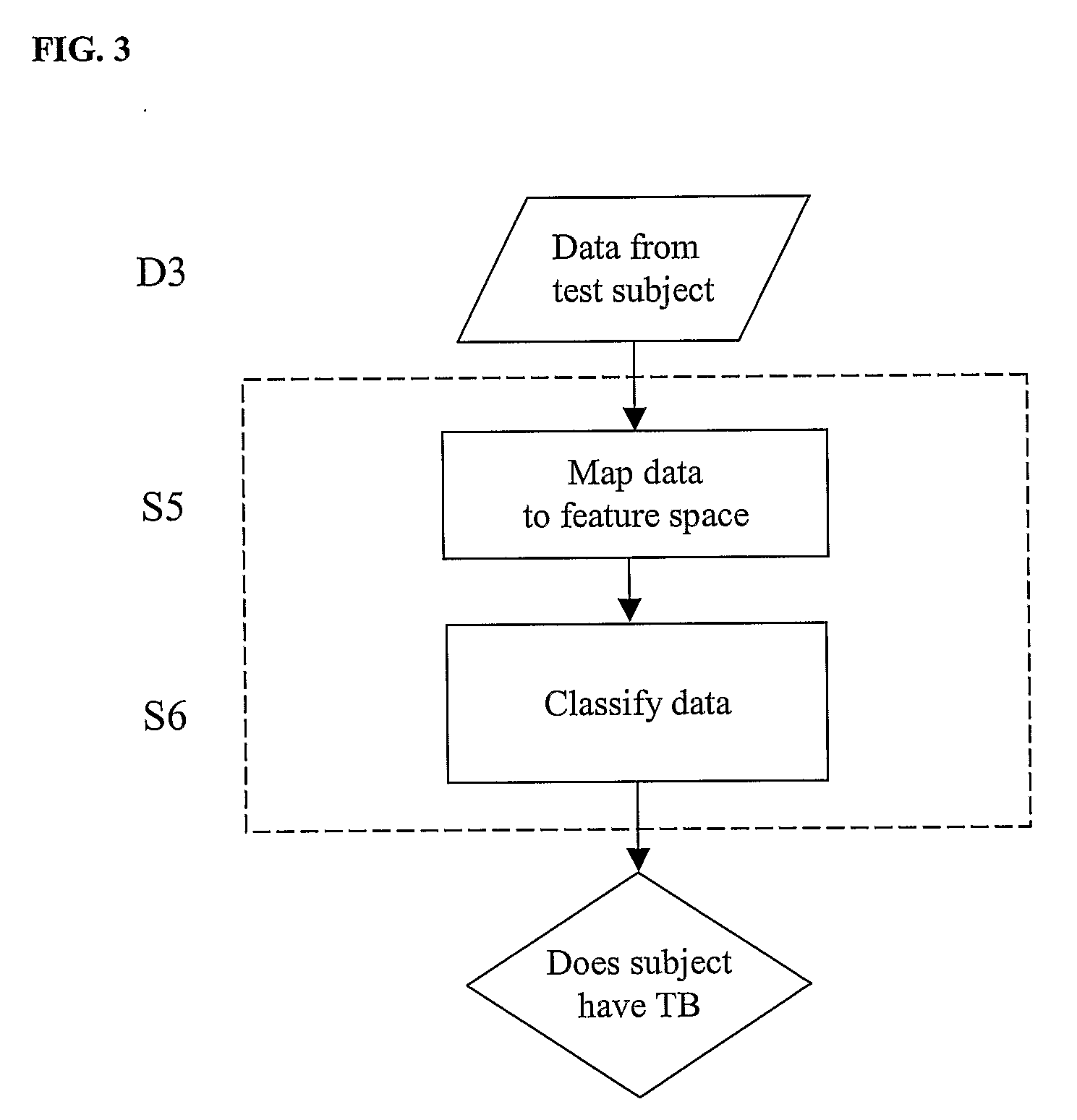Diagnosis of Tuberculosis
- Summary
- Abstract
- Description
- Claims
- Application Information
AI Technical Summary
Benefits of technology
Problems solved by technology
Method used
Image
Examples
example 1
Selection of Patients and Control Subjects
[0169]To develop new approaches for diagnosing TB we collected sera from cases (n=179) and controls (n=170) from multiple sites (UK, Angola, The Gambia and Uganda) representing patients from at least 4 ethnic backgrounds (Table 1). We confined ourselves to patients with TB who presented with typical manifestations of pulmonary disease (Rathman et al., 2003), because this is the commonest presentation of adult TB in all geographic areas. Diagnosis was confirmed by culture of M. tuberculosis. Details of patients that include both smear positive and smear negative cases, and control subjects (including HIV status) are given in Tables 1 and 2a. As expected, most patients presented with cough, fever and weight loss, and the majority had cavitary pulmonary disease.
[0170]For our control subjects, we recruited healthy volunteers as well as patients having conditions with clinical features that can overlap with TB (Table 2b). Our control subjects hav...
example 2
Proteomic Profiling and Supervised Machine Learning Classification
[0171]We first profiled 349 serum samples from these subjects on weak cation exchange (CM10) protein chip arrays by Surface Enhanced Laser Desorption lonisation Time of Flight Mass Spectrometry (SELDI-TOF MS) (Issaq et al., 2002; von Eggeling et al. 2001) and identified 219 peak clusters from m / z spectra in the range 2,000-100,000. We then used state-of the-art supervised machine learning classification methods (Table 3 and FIG. 4) to discriminate the proteomic spectra of patients with TB from the controls using the training-testing-set approach (Table 1). The ability of a classifier to correctly discriminate data in the testing set is known as its generalization performance (Vapnik, 1998; Cristianini and Shawe-Taylor, 2000). We compared the generalization performance of a variety of classifiers by plotting their performance on such a testing set in Receiver Operating Characteristic (ROC) space.
[0172]In our study the ...
example 3
Selection of Markers
[0176]However, while SELDI technology can provide a diagnostic test for TB that makes no prior assumptions about the identities of proteins constituting an informative signature, cost and complexity may preclude its widespread general use. We therefore selected a subset of informative peak clusters for further evaluation by applying a correlation filter method to detect independently informative peaks (Guyon and Eliseeff, 2003). We ranked 10 mass clusters with the highest positive, and 10 with the highest negative, Pearson correlation coefficients. The m / z values of these markers is shown in the Table below.
Positively CorrelatedNegatively Correlated‘M18394_9’‘M4100_03’‘M8952_75’‘M3898_52’‘M11720_0’‘M13774_3’‘M11454_1’‘M13972_1’‘M18591_2’‘M3322_01’‘M11488_1’‘M2956_45’‘M11541_5’‘M5644_96’‘M9076_68’‘M3939_63’‘M8895_13’‘M4056_39’‘M10856_8’‘M6649_74’
[0177]To study the discriminatory power of the selected 20 mass clusters we first paired each mass with every other (400...
PUM
| Property | Measurement | Unit |
|---|---|---|
| Volume | aaaaa | aaaaa |
| Volume | aaaaa | aaaaa |
| Volume | aaaaa | aaaaa |
Abstract
Description
Claims
Application Information
 Login to View More
Login to View More - R&D
- Intellectual Property
- Life Sciences
- Materials
- Tech Scout
- Unparalleled Data Quality
- Higher Quality Content
- 60% Fewer Hallucinations
Browse by: Latest US Patents, China's latest patents, Technical Efficacy Thesaurus, Application Domain, Technology Topic, Popular Technical Reports.
© 2025 PatSnap. All rights reserved.Legal|Privacy policy|Modern Slavery Act Transparency Statement|Sitemap|About US| Contact US: help@patsnap.com



